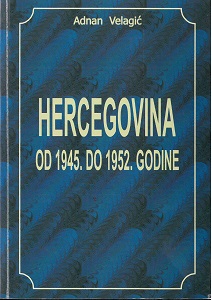
We kindly inform you that, as long as the subject affiliation of our 300.000+ articles is in progress, you might get unsufficient or no results on your third level or second level search. In this case, please broaden your search criteria.

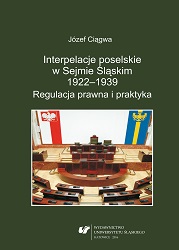
Legal regulation of deputy interpellations in Silesian Sejm 1922—1939The material right of interpellation was assessed by Art. 14 of Constitution Act of July 15, 1920, which contained the organic statute of Silesian voivodeship (Dz.U.R.P. No 73, pos. 497) constituting that Silesian Sejm had the right to interpellate with the Silesian voivode andVoivodeship Council. On the other hand, the formal right to interpellate, and therefore the manner in which material right was realized, was to be specified by the act on the internal constitution of Silesian voivodeship. Nevertheless, advanced — especially in the 1930s — works on the bill did not lead to adopting the act on internal constituton. In such a situation the interpellating procedure was regulated by the standing orders of the Silesian Sejm: the interim orders (of October 13, 1922) and the permanent orders (of January 31, 1923), the standing orders of the I Silesian Sejm, the standing orders of the II Silesian Sejm of June 17, 1930, the standing orders of the Silesian Sejm of the IV term of office, adopted on March 11, 1936. As for the material right on interpellation, one has to notice some disturbing, because against the law, transformations: the appearance of the third interpellated body, namely the Council of Ministers, in the standing orders of the II Silesian Sejm, and the omission of Voivodeship Council as the interpellated body in the standing orders of March 11, 1936.The Provisions of the standing orders of the Silesian Sejm sittings, thus art. 44 of two standing orders of the sitting of the Silesian Sejm of the I term of office; art. 24 and 25 of the standing orders of the II Silesian Sejm; art. 84 of the standing orders of the Silesian Sejm of the IV term of office, allow to identify three subsequent periods of interpellation, i.e. the first period: accepting the interpellation by the marshal and submitting it to the interpelled; the second period: performing the interpellation by the interpelled body and submitting a reply to the marshal; the third period: lodging the interpellation at the orders of the day of the plenary sitting, discussion, voting for acknowledging the reply (or, alternatively, for not acknowledging the reply). Submission the interpellation to the Sejm Marshal was possible after meeting three formal requirements: obtaining the minimal required support, expressed by the number of signatures on the interpellation (7 signatures in the standing orders dated October 13, 1922 and January 31, 1923; 5 signatures in the standing orders dated June 17, 1930; 3 signatures in the standing orders dated March 11, 1936); the interpellation could not contain any expressions that would violate Sejm dignity (this condition is found only in the standing orders of the II Silesian Sejm); the interpellation required written form; it had to be formulated in the Polish language. Provisions concerning the latter requirement were specified by two Silesian acts, i.e. the act of January 16, 1923 on the official language on the territory of Silesian Voivodeship (Dz.U.Śl. No 5, pos. 34) and the act of July 16, 1937 on the official language of authorities and administration offices in Silesian voivodeship (Dz.U.Śl. No 14, pos. 32). Article 44 of the standing orders of the I Silesian Sejm specified that the interpellated body would submit an oral reply at the plenary sitting; whereas a written reply was to be submitted only when interpellants had given their assent to it in advance. It follows from the Provisions of the standing orders of the I and II Silesian Sejms that the interpellated body had to respond within the period no longer than three weeks. Moreover, the standing orders of the Silesian Sejm of the I term of office obliged the marshal to inquire when the interpellated body would submit their response to the interpellation. There were no orders of Silesian voivode as far the second period of interpellating was concerned. An extrasilesian source, as regards the second period of interpellating, was the circular of the Minister of the Interior No OL. 9673 dated November 23, 1926 on taking a stance on interpellations submitted before the closing of the session (Dz.Urz. MSW No 5, pos. 117), despite thefact that formally it did not regulate the interpellation procedure in the Silesian Sejm. Besides, it is difficult to find there any regulations specifying the procedure of performing interpellations, since the minister recommended not performing the interpellations submitted before the suspension of the session. Article 44 of the standing orders of the I Silesian Sejm obliged the marshal to lodge the interpellation at the order of the day of the plenary sitting within the period no longer than three weeks. Whereas article 25 of the standing orders of the II Silesian Sejm specified two alternative factors of lodging the interpellation by the marshal at the order of the day, i.e. in the case when interpellants would not be satisfied with the reply or when the relevant executive authority would not reply to the interpellation within 3 weeks.More detailed was the legal regulation of interpellating of the third period. In accordancewith the provisions of two standing orders of the I Silesian Sejm, the marshal lodged the interpellation at the order of the day ex officio. Only then were further actions of the third period undertaken: explanatory statement of the interpellation by the interpellant (with the support of at least 7 deputies); replying or refusing to reply by the interpellated body; opening the discussion upon request with the support of at least 13 (later10) deputies. The final action of the third period was Sejm’s taking a stance on the reply to the interpellation, being expressed in the form of two alternative resolutions: the resolution on acknowledging the reply of the interpellated body or a resolution on not acknowledging the reply of the interpellated body. On the grounds of the standing orders of the II Silesian Sejm, lodging the interpellation at the order of the day by the marshal could take place exclusively on interpellants’ demand. Besides, the debate on the interpellation and the reply to it could take place on the basis of the resolution of the entire Sejm, and not with the support of 13 or 10 deputies. What is more, passing the resolutions that evaluated the interpelled body’s reply by Sejm was of a facultative character. Pursuant to art. 84 paragraph 4 of the standing orders of the IV Silesian Sejm, the marshal lodged the interpellation at the order of the day of plenary sitting in three cases: on interpellants’ demand; if the voivode notified the marshal that he intended to give an oral reply; when the period of 3 months had passed since the interpellation was submitted. Moreover, the debate (discussion) followed on the basis of the resolution issued by Sejm. An important restriction on the effectiveness of interpellating was provided by act 84 paragraph 6 of the latter standing orders, constituting that in the debate, apart from the representative of the Government, also one of interpellants and one of the deputies whose stance is different from the one expressed by the interpellants were allowed to take the floor. The comparison of the rules regulating the interpellation procedure in four standing ordersof the Silesian Sejm demonstrates that with the passing of time legal provisions restricted theeffectiveness of interpellating by means of the following: limiting the admissibility of the debate on the reply to the interpellation; the participation in the discussion of a deputy whose standpoint was different from the one of interpellants; excluding the possibility of expressing the opinion on the reply by Sejm, in the form of a resolution on acknowledging the reply of the interpellated or, alternatively, on not acknowledging the reply of the interpellated. Interpellation practice in Silesian Sejm 1922—1939The problem of conformity of practicing with legal regulation of interpellating Art. 44 of two standing orders of the I Silesian Sejm obliged the marshal to pose a question to the interpelled body about time when the interpelled body would submit their reply to the interpellation. The review of 90 interpellations of Silesian Sejm of I term of office demonstrates that not even once did the marshal pose such a question. The same article specified that the written form of the reply was permissible only if the interpellants agreed to it in advance. In practice, the interpellated body provided their reply almost exclusively in the written form, despite the fact that the interpellants agreed to the written form only in three cases. With the exception of three cases, whereby — clearly by mistake — the marshal accepted the interpellation despite the lack of one signature, in the remaining cases the minimal required support was adhered to. So was the case in the Silesian Sejm of I, II, and III terms of office. The standing orders of first three Sejms specified that a deadline for replying to the interpellation should not exceed 3 weeks. In the replies that were found, the addressee of the interpellation usually exceeded, sometimes considerably, the deadline specified in the standing orders. There were merely few replies submitted within the deadline. The contents of several interpellations were beyond the scope of the competences of the voivode and the Voivodeship Council. These were interpellations concerning special (non-consolidated) administration, i.e. judicial, military, or railroad administration, as well as interpellations that fell within the competences of the voivode of Cracow, or even the Ministry of Foreign Affairs. Silesian voivodes replied to these interpellations as well, acting as intermediaries, sending the interpellations themselves to appropriate authorities and offering on their behalf adequate explanation to the interpellants.The first action of the third period of interpellating was lodging the interpellation by themarshal at the order of the day of the plenary sitting, and the final action was formulating anopinion — a positive or negative one — by Sejm about the reply submitted by the interpelledbody.Pursuant to the provisions of two standing orders of the I Silesian Sejm, the marshal lodged the interpellation at the order of the day ex officio. In practice, marshal Konstanty Wolny lodged at the order of the day of I Silesian Sejm merely 5 interpellations, two of which were lodged on interpellants’ request. In the final period of interpellating, 3 replies were acknowledged by Sejm, and 2 replies were not acknowledged. In III Silesian Sejm, the marshal lodged 4 interpellations at the order of the day. The voivode’s reply to one of them was acknowledged by Sejm, one reply was not acknowledged. In the case of the remaining two replies, the motions were not voted on. In practice — as a matter of fact against the law — the marshal of Silesian Sejm did not lodge interpellations at the order of the day when interpellants accepted the reply. In such situations, probably after consulting the interpellants, the marshal terminated the proceedings of the second period, endorsing on the interpellation and on the reply ad acta. Due to the lack of sources, the question concerning the relationship between the statute law and the law realized in interpellating practice of IV Silesian Sejm must be left unanswered.Interpellating activity of parliamentary clubs (deputies) of Silesian SejmIn four Silesian Sejms there have been 141 interpellations altogether. The authors of 136 interpellations were parliamentary clubs, of 2 — Sejm committees, and in IV Silesian Sejm — in the absence of parliamentary clubs — deputies signed on the interpellations. The frequency of interpellating exhibited high variability: in I Silesian Sejm — 90 interpellationsper 187 plenary sittings; in II Silesian Sejm — 15 interpellations per 10 sittings; in IIISilesian Sejm — 33 interpellations per 49 sittings; in IV Silesian Sejm — 3 interpellations per32 sittings. In the period of three Silesian Sejms the PPS club (Polish Socialist Party), referred to as KPS (Club Socialist Deputies) in III Silesian Sejm, submitted the most, i.e. 41, interpellations, which constituted 29,7% of all (138) interpellations that were submitted to the marshal in the period between October 10th, 1922 and March 26th, 1935. In the second place, with 26 interpellations (18,8%), was ChD (Christian Democracy). Such a result, gained almost exclusively until the May Coup, when Christian Democracy formed a part of ruling coalition, contradicts the thesis that interpellations, as a means of controlling administration,serve opposition more than factions in power. The interpellating practice proves the truthfulness of this thesis in the period ranging from the May Coup up to the last sitting of IIISilesian Sejm, when opposition factions submitted 50 interpellations, while the sanation clubNChZP (National Christian Labour’s Unity) — only 2 interpellations. Twenty-one interpellations (15,2%) were submitted by NPR (National Workers’ Party). Two workers’ parties (PPS and NPR) altogether lodged 62 interpellations, i.e. 44,9% of all interpellations(136) submitted by parliamentary clubs in Silesian Sejms of three terms of office. The Club of Deputies’ Group of Christian Democracy and National Workers’ Party, formed after the election failure of NPR in II (three deputies) and III (2 deputies) Silesian Sejm, submitted20 interpellations (2 in II and 18 in the III Silesian Sejm), which constituted 14,5% of allinterpellations, submitted in the Silesian Sejm during three terms of office. KN (German Club) interpellated individually 14 times (10,1%), joint interpellations were altogether 14 (10,1%), i.e. 8 interpellations in I and 6 interpellations in III Silesian Sejm. The authors of 3 interpellations of the IV Silesian Sejm were deputy Józef Płonka (NChZP— National Christian Work Union), deputy Paweł Kubik (ZZP — Polish Trade Association), andnon-partisan deputy form Zaolzie, Rudolf Paszek. Therefore, formed in the year 1928, the sanation club NChZP, with merely 3 interpellations (2 in II and 1 in the IV Silesian Sejm) occupied the last place, exhibiting a very insignificant activity as far as interpellating was concerned. The analysis of the content of interpellations submitted by parliamentary clubs(Sejm committees, deputies) in Silesian Sejm The content of interpellations allows to distinguish the following thematic groups: interpellations on social affairs, political issues, sociopolitical affairs, educational problems, public security matters, communication issues, construction issues, and police affairs. Moreover, there can be identified other matters, which encompass a wide range of issues that go beyond the uppermentioned categorization. Interpellations on social affairs were dominated by two parliamentary clubs of workers’ parties, i.e. KPPS (Club Polish Socialist Party), later KPS (Club Socialist Deputies), with 15 interpellations per 41 interpellations in total) and KNPR (Club of National Workers’ Party) with 11 interpellations (per 21 interpellations in total). Altogether, both clubs of workers’ parties interpellated 26 times per 62 interpellations submitted by them. KChD (Club of Christian Democracy) interpellated on social affairs 7 times (per total 26 interpellations that they submitted). Of 3 interpellations submitted to the marshal by sanation party KNChZP (Club of National Christian Labours limity), 3 interpellations concerned social issues (2 in II Silesian Sejm, 1 in IV Silesian Sejm). Into the class of interpellations on social affairs, one also has to include 3 interpellations submitted by KZPChDiNPR (The Club of Deputies’ Group of Christian Democracy and National Workers’ Party). Moreover, there were 3 interpellations submitted by KN and 3 joint interpellations. In total, in four Silesian Sejms there were 45 interpellations concerning social affairs (per 141 interpellations altogether), which constituted 31,9% of all interpellations.A significant percentage of such interpellations in relation to their total number faithfullyreflected social problems of Silesia: increasing unemployment, lockouts, workers’ dismissals,irregular payment of benefits, the lack of insurance against unemployment, mass job dismissalnotes, celebrating holidays (i.e. working not on all days of the week), suspending by fraternities the payment of pensions and other dues, etc. Interpellations concerning political affairs were 31. In this thematic group, in majority (13) were joint interpellations (interpartisan). Nine interpellations on political issues were tabled by KZPChDiNPR; 4 interpellations — by KPPS; 2 — by KChD; 1 interpellation was submitted by each of the following clubs: KNPR, KN, and also NChZP deputies. A small group, merely 8, of interpellations on sociopolitical affairs (5,7%) was constituted by 6 interpellations by KNPR, 1 interpellation by KChD, and 1 interpellation by KPPS. The contents of these interpellations demonstrates a close relationship between political affairs and social issues. The examples of such a relationship may be interpellations on implementing on the Silesian voivodeship — without the consent of Silesian Sejm- the spirits monopoly law, or interpellations on inadequate distribution of tobacco warehouses, in which incorrect application of law could deprive many people of their work. As far other thematic groups are concerned, there must be identified the following numbers of interpellations submitted by parliamentary clubs:— on schools affairs: 12 interpellations (5 by KChD; 1 by KNPR, 3 by KN, 3 by KZPChDil-NPR);— on public security issues: 3 interpellations (1 by KChD; 2 by KN);— on communication issues: 3 interpellations (2 by KChD; 1 by KN);— on construction affairs: 3 interpellations (1 by KChD; 1 by KPPS; 1 by KZPChDiNPR);— on police affairs: 3 interpellations by KPPS;— on other affairs: 32 interpellations (7 by KChD; 2 by KNPR; 3 by KN; 12 by KPPS; 4 byKZPChDiNPR; 3 joint; 1 by non-partisan deputy Rudolf Paszek).
More...
The main research aim of this monograph is to distinguish main stages in the foreign policy of Poland towards Russia between 1992 and 2015 and outline their specifics. The author attempted at a synthesis of major manifestations of Polish-Russian cooperation and most sticking points in the intergovernmental (international) relations during that period. An important objective was to show the sources and examples of a divergence of interests, and point to the goals, which were based on these premises, established by the foreign policy-makers in Poland and Russia and pursued in mutual relations and international affairs.Between 1992 and 2015, in Poland’s foreign policy towards the East and national security policy, the relations with Russia and the Ukraine were of utmost importance. On the economic level, considering the volume of mutual trade turnover, Poland’s main partner in the East was the Russian Federation, whereas on the political level, the Ukraine was seen as a strategic partner. Along with the Ukraine, Russia played a key role in Poland’s security policy in the discussed period. It should be emphasized that Polish-Russian and Polish-Ukrainian relations were very closely linked, and so was Poland’s policy towards Russia and the Ukraine. In Poland’s foreign policy towards Russia, or in broader terms, in Polish-Russian relations between 1992 and 2015, seven stages can be distinguished; each having their own characteristic. Despite some new specifics in each particular stage, they all shared an element of continuity. The constant theme was a great divergence of interests between Poland and Russia, particularly with regard to the European security system, and the role of NATO in shaping this security, as well as further stages of the alliance’s enlargement, especially by countries of the post-Soviet area; energy security and Poland’s strive for diversification of fuels supplies faced with Russia’s actions aimed at the diversification of routes of sending its gas and crude oil to Western Europe bypassing the Ukraine and Poland; a historic dispute, in which a thorough, satisfying for the Poles, explanation of the Katyn Forest massacre was particularly high on the agenda among other issues; opposing visions of building anorder in Eastern Europe, and first and foremost, in the Ukraine. With the passing of time, especially after Poland’s NATO and the EU accession, the future of Eastern European countries, particularly the Ukraine and Belarus, has become a fundamental issue in Polish-Russian relations. Both Russia and Poland treated Eastern European countries as a sort of a safety buffer. However, the two countries had entirely different visions of how this buffer ought to be shaped. The political leadership in Poland saw the strenghtening of national security in the strenghtening of the Ukrainian buffer through the Ukraine’s membership in NATO and the EU, whereas for the political leadership in Russia, the strenghtening of national security through Ukrainian buffer meant preserving its outside NATO status, or incorporating it in the the security system built under the aegis of Russia on the area of CIS.A characteristic of the Polish-Russian relations in that period was a great imbalance to Poland’s disadvantage, resulting from the differences in broadly understood physical potential of the two countries and, consequently, their international roles (Poland being a medium-size country situated in Central Europe and Russia being a superpower in Central Eurasia). The capacities of Poland to shape the situation in Eastern Europe on its own were incomparably lower than Russia’s. Therefore, Poland was trying to make use of European and Euro-Atlantic multirateral structures, mainly through the Eastern Dimension realized by the EU and NATO, to have as much influence as possible, on the desired developments in Eastern Europe. The eastern policy under successive RP governments was characterized by their overrating, frequently, of their own capacities, lack of objectivity in assessment of the situation across our eastern border, and application of double standards, particularly in the policy towards Russia.Polish-Russian political relations throughout the post-Cold War period were critical, and improvements were relatively short-lasting. Not only Russia, but also Poland is to blame for such a state of events. The Polish side, due to historical reasons and imbalance of potential, expected Russia to take more initiative in coming to an agreement with Poland. However, it has to be admitted that in many activities undertaken by Poland with regard to European security, in particular Eastern European subregion, the interests of Russia were completly disregarded, although they did not have to be accepted fully. An example of this was Polish diplomacy in the second half of 2013 intended not to allow Russia to be included in the negotiations on the EU association agreement with the Ukraine about issues that had economic implications for Russia’s interests. In their policy towards Russia, foreign policy-makers in Poland, forgot, all too often, or, were unwilling to remember, about the principle that in order to meet the security needs of one’s own country, one should also consider the security needs of other countries, the neighbouring ones in the first place. Analyzing the policies under succesive III RP governments on European security and relations with the post-Soviet countries, it is hard to share the view prevailing in our country that Poland did its best to develop partnership and good neighbourly relations with Russia. Among politicians, publicists and the Polish society, there was a large group of people who took a stance, though it was not always formally articulated, that Poland has a right, or even a duty to remain hostile towards Russia. On the other hand, Russia should not act unfavourably towards Poland, regardless of Poland’s anti-Russian policy, although, obviously, it was declared otherwise.One of the few stages showing a distinct improvement in Poland’s policy towards Russia and a mutual willingness to normalize our political relations, was the one between 2008 and 2010, when an unsuccesful attempt was made at pragmatizing foreign policy towards Russia. Since the end of 2007, this new foreign policy, gradually encompassing other areas, led to a greater or lesser modification of the policy to date towards Russia, the Ukraine, Belarus and Georgia by basing it on the so-called positive realism. These new trends increased cooperation between Poland and Russia and, eventually, a considerable progress was achieved in normalizing our relations. Between 2008 and 2010, Polish policy towards the East not only changed in practice, it was also a conceptual change. The crash of the presidential plane at Smoleńsk (April 10th, 2010), in which 96 peple were killed, including President of RP Lech Kaczyński and His Spouse, was a major, if not primary reason why the normalization process (2008–2010) was seriously hampered to the point of a standstill between 2011 and 2013. The Smoleńsk air disaster, and conflicting stands over its causes in particular, exacerbateddivisions in the Polish society and strenghtened reluctance, if not hostility, towards Russia.A large part of the Polish political class and society did not accept a version of an inadvertent air disaster (plane crash), whose causes, like not following correct procedures, lay on both Poles and Russians. The surveys conducted during the years following the Smoleńsk air disaster showed that over 30% of the Polish society were convinced that it had been an attempt on the life of the Polish delegation en route to a commemoration of the 70th anniversary of the Katyn Forrest massacre, and that the Russian government and secret services had been involved. After the Smoleńsk air disaster, foreign policy towards Russia and Polish-Russian relations became a ground for political struggle in our country. For many politicians and conservatist right-wing journalists, a demonstrated degree of anti-Russian sentiment became the main criterion of patriotism. In a large part of the Polish society, a belief was strenghtened that actions should be taken to weaken and isolate Russia, and to minimize, rather than increase cooperation between the two countries. This meant that internal conditions within our country, which could possibly motivate the foreign policy-makers to stop viewing Russia as the main threat and encourage a breakthrough in thinking about that issue, deteriorated markedly. Consequently, Polish-Russian relations between2011 and 2013 remained in a state of deadlock. In the foreign policy of Poland between 1992 and 2015, Russia played the leading role. This, however, stemmed from Russia being perceived by the policy-makers as the main threat to our national security, not a recognized partner in pursuing this security. Throughout that period, in all successive stages of Polish security policy, Russia was regarded as the main threat. Each political leadership in Poland, especially since the mid 1990s, treated Russia in this way, and these were not merelyanti-Russian declarations, but a guiding principle of the foreign policy. Behind it, was a conviction that Russian imperialism was timeless and Russia would never accept the sovereignty of Poland. It was an obvious reference to the classical Polish geopolitical thought about Russia posing main threats to our national security. During the crisis and conflict in eastern Ukraine, between 2014 and 2015, the foreign policymakers in Poland revived the stance of a military threat on the part of Russia. For the first time since the end of the Cold War, such loud voices were heard about a possible military attack on Poland. Unlike the earlier periods, when there was an informal presumption that Russia was a threat to the security of Poland, in 2014, for the first time, in III RP’s security policy, Russia was formallypointed to as a direct military threat. It was articulated in official state documents, including Strategia Bezpieczeństwa Narodowego Rzeczypospolitej Polskiej from November, 2014, and in addresses delivered by the Polish government officials (for instance in exposé of Foreign Minister R. Sikorski and his follower G. Schetyna).The crisis and conflict in south-eastern Ukraine did not substantially change Poland’s policytowards Russia. What did change between 2014 and 2015, however, was that much more emphasis than ever was placed on Russia being a threat to our national security, and there being a serious risk of a Russian direct invasion of Poland. During 2014 and 2015, the process of politicizing fear (policy of fear) of Russia was at its height. For Poland, a major outcome of the Ukrainian conflict and crisis was decreased national security and growing fears, among them the fear of Russian invasion, which does not mean that such a threat was real. During the years 2014 and 2015, Polish-Russian political relations at the highest level came almost to the point of being frozen. Important direct implications of the Ukrainian conflict forPoland’s security were, apart from a growing fear of Russia, increased desires towards strengthening its own defense capability, strenghtening NATO cohesion, increased involvement of NATO in our sub-region’s security and closer bilateral Polish-American cooperation regarding military security. Resolving the conflict in eastern Ukraine as quickly as possible was in the interests of Poland. However, Polish diplomacy did not engage much in the conflict deescalation. They were very skeptical about the successive agreements aimed at ending the military operations negotiated within the frames of the so-called Normandy format (Mińsk I and Mińsk II). It seems that, considering the geopolitical situation in the Ukraine and divisions of the Ukrainian society, this country should remain a buffer state. Alternatively, coming out of this role should occur gradually, through a simultaneous Europeization of the Ukraine and Russia. Poland should not be interested in the „revolutionary” speeding up of the processes occuring in the Ukrainian society. Responsible politicians willing to serve the best interests of their nation should be aware of the limitations in pursuing even the most support worthy goals. The policy of every country, the foreign policy of Poland and the Ukraine included, should be founded on a realistic assessment of one’s own capabilities so that aspirations would not outgrow the real possibilities of their attainment. Poland, aspiring to the role of the EU main expert in Russian and the post-Soviet area affairs, through insisting in the EU on the earliest possible Ukraine association with the EU, contributed in a way to the situation when the Ukraine had to choose between the EU and Russia. Polish politicians did not anticpate the negative outcomes of such acceleration for the Ukraine itself (including theloss of Crimea and strong separatist tendencies in the East of the Ukraine), as well as for Russian-Ukrainian relations and the security of Poland. Therefore, the firm support and involvement of the Polish political class in the so-called democratic revolution in the Ukraine during 2013 and 2014, can hardly be regarded as a succcess. Polish policy towards the East ended in yet another failure, which was shown as confirmation when Poland was not included in the talks aimed at resolving the Ukrainian crisis, which were held by officials from the Ukraine, Russia, Germany and France since the middle of 2014.The Ukrainian crisis and conflict was a turning point in Polish security policy and Polish-Russian relations. The Polish government officially began to treat Russia as the largest threat to the national and international security. A considerable part of the political elites in Poland did not see the threat in excessive dependence of Polish economy on Russian energy resources or other economic threats, but in a direct military attack. Generally speaking, it is unknown to what extent the Ukrainian crisis and conflict will, in the long run, have an impact on changes in Polish policy towards the East, particularly towards Russia and the Ukraine. It exposed the ineffectiveness of our foreign policy to date towards the East. In this context, a question arises: What will be mid- and long-term implications of the Ukrainian conflict forthe modification or a radical alteration to Polish foreign policy towards the East? Another fundamental question pertains to Polish-Russian relations: What policy should Poland pursue towards Russia now and in the future? Will the foreign policy and security policy be directed,like in 2014 and 2015, at instransigence and confrontation, or will the normalization tendency prevail as regards Russia, and will the relations with the Ukraine be redefined? However, at the end of 2015, nothing implied that the foreign and security policy-makers intended to transform in any way the policy towards Russia and the Ukraine to date. It does not mean that changes will not be implemented in the years to come. It will be closely connected with the impact of the Ukrainian conflict on the modification of the policy of Germany and the entire European Union as well as the policy of the United States on the post-Soviet area.The crisis and conflict in eastern Ukraine strenghtened the legitimacy of argumentation thatthe main player in the post-Soviet area is Russia. None of the serious problems in this area can be resolved without the participation of Russia, and all the more, against Russia, which obviously, does not mean that the proponents of this stance overrate the capabilities of Russia in terms of shaping the closer and farther international environment. On this account, Polish policy will be hardly effective if at least some of Russia’s interests in the post-Soviet area, especially in Eastern Europe, are taken into consideration, as was proven to date. Bearing in mind long-term consquences, the strategic conceptions of the Polish policy towards the East, should opt for the closest possible ties of Russia with political and economic structures of the EU and Euro-Atlantic structures (Europeization of Russia). This, in turn, should result in the evolution of the economic-political system of Russia into liberal democracy.The Ukrainian crisis and conflict classified the effectiveness of the Polish conception aimed atoccidentalizing the Ukraine, Belarus and Moldova without simultaneously occidentalizing Russia. As was indicated by the proponents of this conception, its implementation assumed an inevitable cost such as a political conflict with Russia. The crisis and conflict in the Ukraine between 2014 and 2015 should be a good reason to change this stance. The biggest price for its implementation was paid by the Ukraininas themselves. Therefore, in the context of these experiences, Poland should support such conceptions and actions in the Ukraine which attempt at Ukraine’s integration with the West not in opposition to Russia, but together with Russia, which does not imply that this process has to be fully synchronized. The direction of actions in this matter is of key importance. Despite the many contentious issues in Polish-Russian relations and different historical memory of Poles and Russians, in the long-term interests of Poland’s security, lies implementing a cooperative and integrating, not a confrontational conception. For the normalization of Polish-Russian relations, it is essential that the successive governemnets of Poland and Russia should have a political will to a less confrontational approach towards disputable issues and resolve emerging problems in a compromising way, which is one of the „scarcest commodities” in the Polish-Russian relations. A compromise should not be treated as a failure, as is often believed, also by the Poles. It also requires changes in mutual perception. A true normalization of mutual relations between Poland and Russia will not be possible if the majority of political elites, media and society in both countries will see the other not even as a difficult partner of rival, but an enemy. The divergence of interests does not have to lead to hostility. The governing groups inPoland and Russia face a challenge in improving Polish-Russian relations. They can either attempt to broaden the area of common interests or to highlight the discrepancies and divergence of interests, and thus strenghten social attitudes prone to either cooperation or confrontation.
More...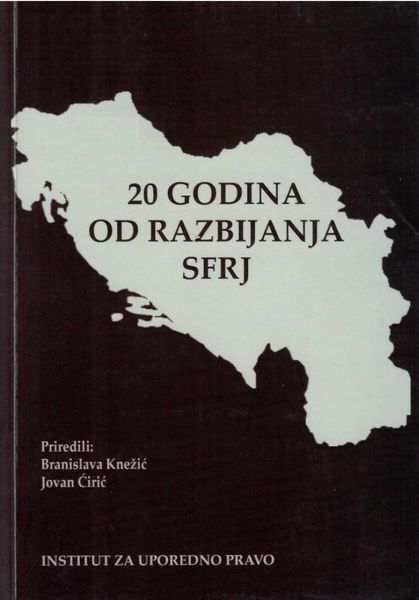
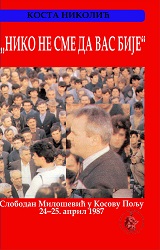
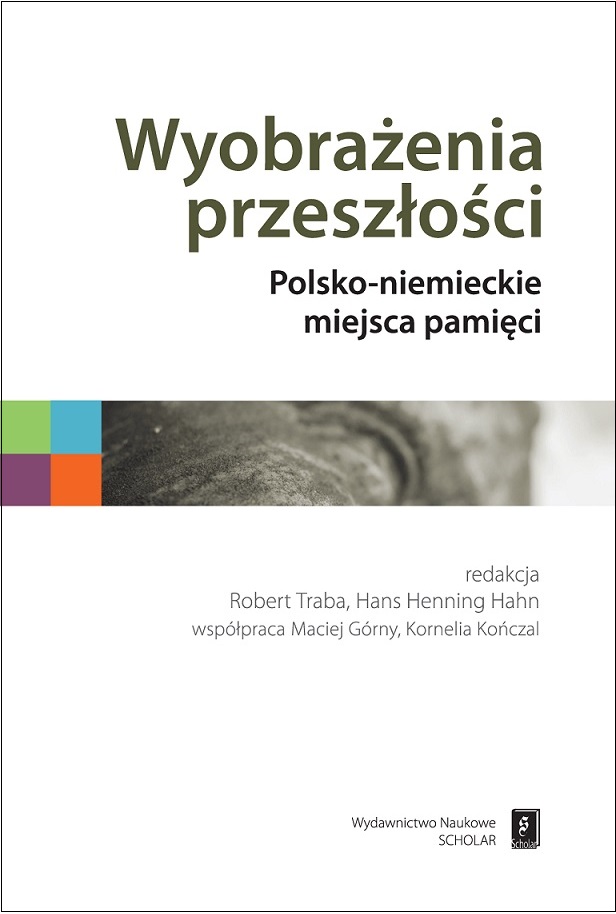
Metaforycznie rozumiane miejsca pamięci – minione wydarzenia, dawne symbole i postaci – są historycznymi fenomenami, które stają się punktami krystalizującymi nasze zbiorowe wyobrażenia o przeszłości. Przez ostatnie ponad ćwierć wieku, za sprawą Pierre’a Nory, w kulturze europejskiej miejsca pamięci rozumiane i badane były głównie na podstawie doświadczeń jednego narodu. Na ile rozumienie obrazów przeszłości zmienia się, gdy spojrzymy na nie z perspektywy historii wzajemnych oddziaływań dwóch sąsiadujących ze sobą od ponad tysiąca lat społeczeństw? Takie pytanie legło u podstaw polsko-niemieckiego projektu, w którym wzięło udział 117 autorów z sześciu europejskich krajów. W efekcie powstało liczące ponad 5000 stron, w języku polskim i niemieckim, dziewięciotomowe dzieło Polsko-niemieckie miejsca pamięci (Warszawa/Paderborn 2012–2015). Jest to opowieść o Polsce i Niemczech, o wzajemnych relacjach i sposobach ich pamiętania.
More...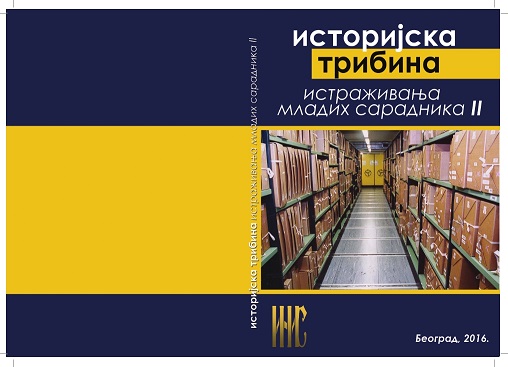
У зборнику који је пред читаоцима сакупљени су чланци који су настали из предавања одржаних на Научној трибини Института за новију историју Србије током 2013/14. године. Трибина се одвија кроз дијалог излагача и публике, што ауторима пружа могућност да провере своје ставове, добију нове информације и корисне сугестије. С друге стране, писана форма је прилика да се сазнања, идеје и информације добијене кроз дијалог на трибини унесу у коначну верзију радова. На тај начин аутори предавања, односно чланака у срећном су положају да унапред чују неке од критика и допуна које остали историчари чују тек од рецензената или тек када рад већ буде објављен. То, међутим, не значи да и ове радове нису прегледали компетентни рецензенти. [...]
More...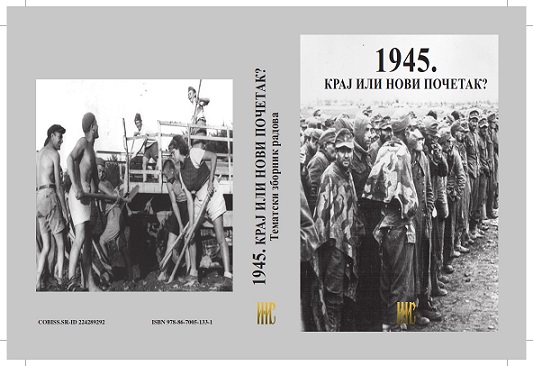
In 2015, the world celebrated its 70th anniversary since the end of World War II. On the initiative of Dr Dragan Aleksić, the Institute for Contemporary History of Serbia decided to join the commemoration of this significant date by publishing a collection of scientific papers that would not only be of a suitable character but would also represent a scientific contribution to the anniversary. It was an honor for me to be the editor of this collection, and my idea of what it should look like revolved around 1945 as a turning point: a time when the war was ending and a new era was beginning. The end of World War II, to a much greater extent than the end of World War I, also marked the end of an old, pre-war world. After World War I, three empires disappeared, a series of new states emerged, democracy and the right of peoples to self-determination became generally accepted ... The end of World War I sowed, however, the seeds of the next world slaughter. It was incomparably greater than the previous or any other war in history, and its end created a world that people who lived in 1914 would never recognize. Europe was devastated, effectively divided between the two victorious superpowers, while the old European powers were losers or mere formal victors: soon after World War II, and in large part thanks to it, the colonial empires of Great Britain and France began to crumble rapidly, giving birth mainly during the first two postwar decades the world as we know it today. [...]
More...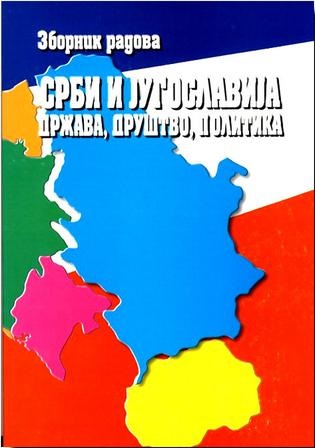
Скоро вековно егзистирање Србије у заједничкој југословенској држави намеће потребу дугорочног и мултидисци пли нарног истраживања положаја Србије, а онда и српског народа у осталим деловима заједничке државе. Сарадници Института за новију историју Србије, прво радом на пројекту Историја српског народа, а затим и на пројекту Срби и распад Југославије извршили су бројна истраживања друштвених, економских, кул турних, просветних, верских и политичких прилика у Србији за време југословенске државе. Рeзултат тога су бројни чланци, ра справе и студије у домаћим и страним часописима и зборни ци ма, као и велики број монографских издања, од којих се већина налази и у најреномиранијим европским библиотекама. [...]
More...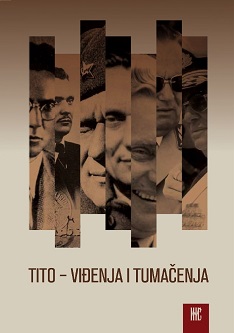
Institut za noviju istoriju Srbije je, u saradnji sa Arhivom Jugoslavije i Südost Institutom iz Regenzburga, u maju 2010. godine u Beogradu organizovao međunarodni naučni skup pod nazivom „TITO: viđenja i tumačenja". Tokom tri dana više od sedamdeset učesnika iz petnaest zemalja (Bosne i Hercegovine, Bugaske, Crne Gore, Češke, Francuske, Hrvatske, Indije, Makedonije, Nemačke, Rusije, SAD-a, Slovenije, Srbije, Švajcarske, Velike Britanije) je izlagalo svoja istraživanja i zaključke i polemisalo o različitim aspektima političke i ideološke delatnosti Josipa Broza Tita, kao i o brojnim interpretacijama Tita kao simbola koji je korišćen u procesima (de)konstrukcije jugoslovenkog društva. Bio je to prvi pokušaj okupljanja akademske i šire društvene zajednice kroz razgovor o delatnosti složene političke i istorijske ličnosti kakva je bio Josip Broz Tito. Skup je bio podeljen u četiri panela, koji su segmentirani na uže programske celine: Josip Broz i Tito u javnom prostoru; Napuštanje margine: jugoslovenska spoljna politika i Josip Broz Tito; Tito, Jugoslavija i Jugosloveni: unutrašnjopolitički i kulturni kontekst; Kultura sećanja. Organizatori su pošli od stava da se o Josipu Brozu Titu može govoriti kao o jednoj od ključnih političkih ličnosti iz vremena hladnog rata, ali i kao o intrigantnom fenomenu snažno prisutnom u javnom polju posle pada Berlinskog zida. Složena politička figura je dobila snagu kompleksnog simbola koji je, međutim, najčešće simlifikovan i jednostrano prezentovan. Veliki broj publicističkih radova stvarao je uprošćenu sliku prošlosti Jugoslavije, koja je unosila dodatne teškoće pri definisanju sistema vrednosti u sadašnjosti. Od nekritične glorifikacije do brutalne banalizacije i satanizacije, Tito je bio predmet brojnih pokušaja (zlo)upotrebe prošlosti. [...]
More...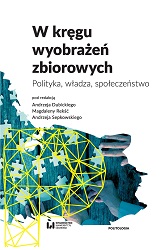
This work is a collection of articles written by representatives of various social sciences whose filed of interest lies within such categories as: collective representations, collective memory, collective identity, myths and stereotypes. Politics should be seen as the common denominator for this broad spectrum of issues raised in this publication as it lies in the centre of the attention of each and every author who contributed to this work. The variety of interests and research orientations corresponds with today’s postulates of sharing interdisciplinary reflections on complex and complicated issues – the issues discussed in this monograph should be considered as such. The first texts in this work are strictly theoretical and deal with: an attempt to categorize the collective representations; an analyses of the the anthroposphere of our days and the return of the “enlightened” man, but not in the understanding of Immanuel Kant; the approximation of the contents and forms of utopia – the utopia of thought and the utopia of deed, which seem to begin to reappear in the political thought of some circles. The majority of texts found in this work refers to the case study, analyses the myths, stereotypes, collective memory and the collective identity of different societies: Polish, Russian, Ukrainian, Czech, Chinese, North Korean and that of former Yugoslavia. The originality of this work is strengthened by the studies devoted to the rare research ideas such as the importance of myths in sport’s diplomacy. It seems that such a broad spectrum of themes focused on the topic issues creates an opportunity for a deeper understanding of the collective spaces.
More...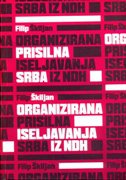
Imperijalne težnje Trećeg Reicha i Italije bile su pokretač Drugog svjetskog rata, a ideološku orkestraciju činili su rasna teorija, »evolucijski opravdavana« borba za životni prostor i anti-boljševizam. Emocionalni naboj davali su osvetoljubivost i želja za revanšizmom prema pobjednicima iz Prvog svjetskog rata te tradicionalni kršćanski antisemitizam. Europa se politički trebala vrtiti oko osovine Berlin–Rim, a činile bi je još neutralne i profašističke države te satelitske države ograničenog suvereniteta. Pored Židova i Roma, u Europi su rasno inferiornima smatrani i Slaveni općenito, posebno Česi, Poljaci, Rusi i Slovenci jer su ujedno bili i smetnja realizaciji njemačkog Lebensrauma. Rusi i Poljaci su tako, uz Židove, brojčano najveće žrtve nacističke projekcije Trećeg Reicha. Svima njima sudbinu je određivala nacistička genocidna ideologija superiornog arijevstva kao pogonskog goriva njemačkog imperijalističkog plana koji je u njima vidio samo biološki potencijal za ropsku eksploataciju.
More...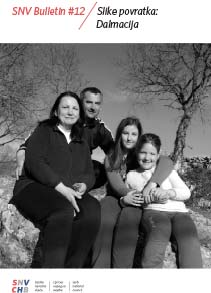
Although each of these stories relates to different experiences and misfortunes, the stories of Serb refugees from Dalmatia are not very different from the destiny of the Serb population, who were forced to leave their homes during the last war. New environment and people gave them just enough to stop fearing for their lives. But as the time passed, the feeling of not belonging to the new environment would not leave them. The feeling of longing for their ancestral homes and a piece of land they could call their own with certainty kept attracting them towards a new beginning.
More...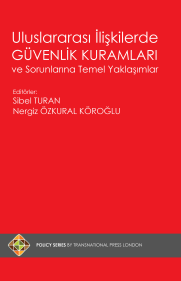
Uluslararası İlişkilerdeki güvenlik kuramları konjonktürel değişimlerle birlikte sürekli gelişmekte ve zenginleşmektedir. Teorik yaklaşımlarla ilgili güncel tartışmalar, disiplinin daha iyi anlaşılabilmesi için önem arz ederken güvenlik yaklaşımlarının ve algılamalarının değişiminin de hesaba katılarak bu yaklaşımların ortaya konulması ve vaka analizleri üzerinden uygulaması önemlidir. Günümüzde “güvenlik” kavramı uluslararası ilişkiler disiplini içerisinde çevre veya toplumsal güvenlik ya da cinsiyet gibi farklı güvenlik boyutları ile analiz edilmeye başlanmıştır. Bu kitabın temel hedeflerinden bir tanesi farklı bakış açılarını yansıtan kuramsal çerçevelerle “güvenlik” kavramına bakabilmektir.. İçindekiler Önsöz Giriş – Sibel TURAN ve Nergiz ÖZKURAL KÖROĞLUKURAMSAL ÇERÇEVE: ULUSLARARASI İLİŞKİLERDE GÜVENLİK – Sibel TURAN, Nergiz ÖZKURAL KÖROĞLU, İlker Aral GÜNGÖR BİRİNCİ KISIM: NEOREALİZM VE GÜVENLİK NEOREALİZM BAĞLAMINDA TÜRK DIŞ POLİTİKASI (1945-1965) – Latif PINARNEOREALİST KURAM ÇERÇEVESİNDE ULUSLARARASI NÜKLEER GÜVENLİK – Hulusi Ekber KAYANEOREALİZM VE İRAN DIŞ POLİTİKASI – Demet ŞENBAŞ İKİNCİ KISIM: LİBERALİZM VE GÜVENLİK 21. YÜZYIL İSRAİL-TÜRKİYE İLİŞKİLERİNİN LİBERAL GÜVENLİK YORUMU – Armağan ÖRKİDOĞAL KAYNAK MİLLİYETÇİLİĞİ BAĞLAMINDA RUSYA-AVRUPA BİRLİĞİ İLİŞKİLERİNDE BİR DIŞ POLİTİKA ARACI OLARAK ENERJİ – Serdar YILMAZNEOREALİZM VE NEOLİBERALİZM KURAMLARININ GÜVENLİK YAKLAŞIMLARI VE ARAP DEVRİMLERİNDE SURİYE POLİTİKALARI – İsmail ERMAĞAN ve Aybars KARCI ÜÇÜNCÜ KISIM: OYUN TEORİSİ VE GÜVENLİK OYUN KURAMI ÇERÇEVESİNDE SURİYELİ MÜLTECİ KRİZİ – Emirhan KAYAPASİFİK YÜZYILINA GİRERKEN ABD-ÇİN İLİŞKİLERİ: ÇİN DENİZİ’NİN ISINAN SULARI VE BÖLGEDE GÜVENLİK SORUNU – Tural BAHADIR DÖRDÜNCÜ KISIM: KONSTRÜKTİVİZM VE GÜVENLİK SOSYAL İNŞACILIĞIN TEMEL VARSAYIMLARI İTİBARIYLA GÜVENLİK YAKLAŞIMI VE AVRUPA BİRLİĞİ’NİN BALKANLAR GENİŞLEMESİ – Kader ÖZLEMKONSTRÜKTİVİZM BAĞLAMINDA ABD’NİN KÜBA POLİTİKASI – İlker Aral GÜNGÖRAVRUPA’DA İSLAM’IN GÜVENLİKLEŞTİRİLMESİ – Sinem YÜKSEL ÇENDEK
More...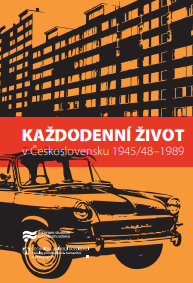
Z desetidílné kroniky Josefa Holečka Naši mám nejraději hned první svazek Jak u nás žijou a umírají z roku 1898. Je obsažným poetickým obrazem venkovského života v polovině 19. století naplněného ještě i napětím mezi feudálním a selským světem, dramatickými osudy protagonistů. Nic pro historiky, zdá se na první a asi i další pohled, ve skutečnosti jde o pramen mluvný a sdělný, jen ho náležitě číst a vést s ním rozhovor, v němž je dějepisec naslouchajícím a dozvídajícím se. Zdrojů poznání, jak u nás žili a odcházeli – i ti včerejší, a zvláště ti včerejší – je téměř neomezeně, vzhledem k lidské mnohosti i jedinečnosti, jen je umět vřazovat do heuristiky.
More...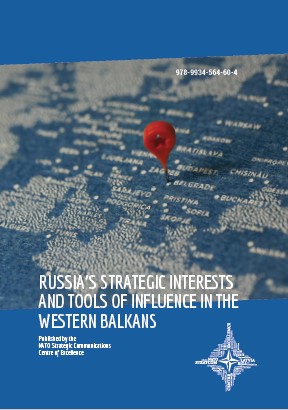
On 17 January 2019, Vladimir Putin paid a landmark visit to Belgrade. A jubilant 100,000-strong multitude waving the white-blue-and-red flags of the Russian Federation and Serbia filled the streets, many people bused in from across the country to participate. The hosts greeted their distinguished guest with an artillery salute. Crowds grew ecstatic as Putin and President Aleksandar Vučić made their way to St. Sava, the Balkans’ largest Orthodox cathedral, completed thanks to a grant from Russia. Just weeks away from the 20th anniversary of NATO’s intervention in Kosovo, the hero’s reception Putin was given accentuated the two countries’ burgeoning ties. Vučić discussed his plans for partitioning Kosovo with Russia’s president.
More...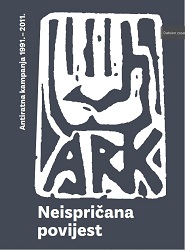
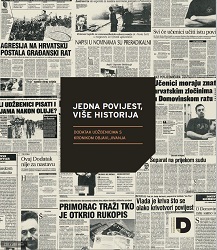
The Supplement to Textbooks of Current Croatian History is a handbook for history lectures, which was ordered by the Croatian Ministry of Science, Education, and Sports after the five-year moratorium on teaching current history in the Podunavlje region expired in the 2002/2003 school year. This easternmost region of Croatia remained under the control of local Serbs after the end of the 1991-1995 conflict, and was returned to Croatian sovereignty in 1998 after a transitory period under UN administration and the signing of an agreement between the Croatian government and the local Serb population. Part of the agreement included the decision that instruction in Podunavlje for Croat and Serb children would take place in separate classrooms, and that a five-year moratorium on teaching contemporary Croatian history in classes taught in the Serbian language would be imposed. At the end of 2002, the Ministry, headed by Minister Vladimir Strugar, in cooperation with the representatives of the Serb community and several history teachers, decided to form the „Commission for developing proposals regarding the teaching of history of the former Yugoslavia since 1989 in the schools of the Croatian Podunavlje,“ as well as produce a handbook which would cover the period of contemporary Croatian history after 1989. It was concluded that the handbook needed to function as an appendix for existing textbooks, and that it would serve as the first step in eliminating the moratorium and as a temporary solution until new textbooks could be chosen that would be translated into the Serbian language and script. After failing to find a publishing company to produce the handbook during 2003, work continued in the fall of 2004, under Minister Dragan Primorac. The Commission chose Tvrtko Jakovina and Snježana Koren from the Department of History at the Philosophy Faculty, University of Zagreb, as well as Magdalena Najbar-Agičić, the author and editor of a number of elementary and high school history textbooks, to complete the handbook. The authors finished the handbook in April 2005. In the meantime, the Commission decided that the text would not only serve the students in Podunavlje, but other students across all of Croatia as additional material for studying contemporary history. Once the work was completed, the manuscript was given to reviewers who needed to evaluate the quality of the methodology as well as the historical content of the material. However, before the reviews — some of which were subsequently shown to be very positive while others were extremely negative — reached the authors of the handbook, the content of the negative reviews appeared in the media and sparked a public debate that lasted for several months. The actual text of the Supplement remained, for the most part, inaccessible to the public, and the content of the Supplement, other than what was posted on the internet site of the Croatian Information Center without the authors’ knowledge or permission, was available only to those interested individuals who showed initiative and directly contacted the authors to see the material. Only a few of the journalists who were writing about this issue at the time actually did this. The situation which ensued was symptomatic for the mentioned time period in Croatia. The issue was overtly politicized, especially because this all occurred within the context of the tenth anniversary of the military-police action „Operation Storm.“ The authors were subjected to newspaper articles in which the Supplement was often described in an explicitly sensationalistic manner. Moreover, the authors were most often called out for allegedly relativizing wartime events, because for some media, politicians, and veterans’ organizations, the multi-perspective approach to teaching about the conflict developed in the Supplement was considered to be „a distortion of the historical truth about the Serbian aggression“ and „an attempt to equalize guilt for the war.“ A number of the reviewers recruited by the Ministry were also involved in this campaign against the authors. Already in the actual process of reviewing the material it was clear that some of the reviewers did not hesitate to stray outside of academic boundaries or resort to using primarily political disqualifications in their negative evaluations. In the course of the polemics raised over this issue, it also became evident that a number of the participants involved in the debate were not ready for thoroughly coming to terms with the past, nor did they support a systematic and academically based investigation of the recent historical events in Croatia. Despite the fact that in 2003 the Croatian Parliament approved the „Textbook Standard“ in which a number of conditions, formulated as „ethic requirements,“ needed to be met by textbooks in order to achieve certain universal values (which include raising students in a spirit of peace, tolerance, and democracy, and teaching them to respect racial, ethnic, cultural, and religious, differences, etc.), the debate over the Supplement revealed various and mutually exclusive concepts about the purpose and goals of history education, especially because of its potential role in shaping a student’s identity. Along with the fact that the universal values mentioned above are consistent with the educational policies of the European Union, there exist serious and deep-seated reasons in the past and present of this region why these values need to become an integral part of Croatian educational policies and practice. A second, specific framework of values that needs to be met by textbooks, according to the „Textbook Standard,“ is that Croatian textbooks must „nurture Croatian national identity“ and „encourage patriotic feelings towards the Republic of Croatia as a community of equal citizens, regardless of ethnicity or religious affiliation.“ The authors of the handbook unquestionably expressed a tendency to include elements from the first group of „ethic values“ mentioned in the „Textbook Standard,“ as well as to apply new methodologies in teaching history in which the students are transformed from passive recipients of information into active participants who draw their own conclusions. These goals in contemporary methodologies can be achieved by applying, among other strategies, a multi-perspective approach, which is a precondition for history education free of ideology. Ultimately, the debate influenced the Ministry of Science, Education, and Sports’ decision to not publish the Supplement. We believe that our decision to place the Supplement to Textbooks of Current Croatian History in our publishing program follows our goals and activities tied to encouraging the public to come to terms with the past and objectivizing recent Croatian history.
More...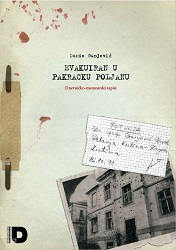
Dnevničko-memoarski zapisi Đorđa Gunjevića, ratnog pomoćnika povjerenika Vlade za Pakrac zaduženog za zdravstvo i socijalnu skrb, tekst je koji ukazuje na sudbinu pojedinca u vihoru Domovinskoga rata, ali i na sudbinu zajednice. Gunjević je svoj posao pomoćnika povjerenika, koji je potrajao nešto više od mjesec dana, radio u ekstremno teškim ratnim uvjetima u Pakracu. Glavna točka njegovog posla bio je Medicinski centar, velika i ugledna zdravstvena ustanova, koja je bila samo dvjestotinjak metara udaljena od položaja pobunjenih Srba. Tko je bio u Pakracu i vidio gdje je Medicinski centar, a gdje su bili položaji pobunjenika, zna da im je bolnica bila kao na dlanu, doslovce na puškomet, i zna da nisu morali ni nišaniti da bi je pogodili. Pakrac je od kraja kolovoza, pa sve do potpisivanja Sarajevskog primirja bio jedna od žarišnih točaka u Domovinskom ratu. Istina, nikad toliko pod lupom javnosti poput Vukovara ili Dubrovnika, ali kada je početkom 1992. godine potpisano Sarajevsko primirje, Pakrac je, baš kao i obližnji Lipik, bio jedan od najrazrušenijih hrvatskih gradova. U takvim nemogućim okolnostima trebalo je nekako djelovati i koliko je to bilo moguće održavati red u Medicinskom centru u kojem je i pri kraju rujna 1991. godine još uvijek bilo više od 300 pacijenata, od toga njih 275 na Psihijatriji. Gunjević je osmislio, a u dogovoru s Ministarstvom zdravstva i svojim pakračkim suradnicima i suradnicama proveo važnu, rizičnu, humanu, ali i nužnu operaciju - evakuaciju Medicinskog centra. Nagrada za to bio mu je, zbog njegove nacionalne pripadnosti, „boravak“ u Pakračkoj Poljani, pod zapovjedništvom Tomislava Merčepa, jednoj od najtamnijih i najsramotnijih točaka Domovinskog rata. Tako se je klatno sudbine u Gunjevićevu slučaju gibalo vrlo brzo: od vrhunca zbog uspješne evakuacije do propasti i razmišljanja o samouništenju na Pakračkoj Poljani u samo nekoliko dana. Gunjevićevi zapisi nisu, međutim, samo knjiga o njegovoj osobnoj sudbini. To je knjiga o tome koliko jedna zajednica može u ratu brzo propasti, odnosno, preciznije rečeno, koliko brzo može biti prisiljena na propast. U samo nekoliko dana Pakrac se našao na popisu mjesta u Hrvatskoj koja su krajem ljeta i početkom jeseni za vrijeme pobune i agresije na Hrvatsku, mimo svoje volje, civilizacijski propadala. U samo nekoliko dana stanovnici Pakraca morali su zaboraviti kakva je to civilizacijska tekovina tekuća voda iz vodovoda, što je to organizirani komunalni život, morali su naučiti što znači šištanje plina iz uništenih instalacija, kako izgleda život u gradu u kojemu ne funkcioniraju socijalne službe, u kojemu se broj zaposlenih u Medicinskom centru naglo smanjuje sedam puta, u kojem se više ne mogu isplaćivati mirovine, ne zato što nema novca, nego zato što to fizički nije moguće. U svemu tome, i u svojoj dramatičnoj osobnoj sudbini, Gunjević nalazi lijepe riječi i riječi poštovanja za mnoge svoje sugrađane. Nekima od njih bit će ugodno čitati ove zapise. Ima među njima ljudi raznih struka, raznih nacionalnosti. S poštovanjem se prisjeća svojih kolega iz zdravstva, primjerice Katice Bergman, dr. Nikole Zelića, dr. Luke Vrbana i Slave Jankovića, dr. Ivice Kosteckog. Sa sjetom se prisjeća svog kolege iz Povjereništva Stjepana Širca. Nekima, pak, vjerojatno neće biti ugodno čitati Gunjevićeve zapise. I opet, tu ima ljudi raznih struka, raznih nacionalnosti, kako „ njegovih“ Srba, tako i Hrvata. Začuđujuće je, međutim, da Gunjević pronalazi riječi poštovanja, pa i simpatije, čak i za neke ljude koji su ga držali u zatočeništvu u Pakračkoj Poljani. Gunjevićeva priča na kraju je ipak imala sretan završetak, koliko je to moguće u ratno doba. Ostao je živ, kuću je obnovio, a Grad Pakrac ga se sjetio i dodijelio mu priznanje. Njegovi zapisi isključivo su - njegovi. Rezultat su začudne, gotovo nevjerojatno činjenice da je rokovnik u kojemu je 1991. godine bilježio što je radio kojega dana uspio sve „preživjeti" i koji je poslužio kao temelj za rekonstrukciju događaja i prizivanje događaja iz sjećanja. Njegova sjećanja, zabilježena oporim stilom, lišenim lirike, točna su koliko sjećanja pojedinca, bez obzira na pomoćna sredstva, mogu biti. No, ona su, osim osobnog svjedočanstva jednog doba i jedne sudbine, i poziv svima drugima da pokrenu vlastita sjećanja i iza sebe ostave memoarski zapis na jedno burno, ratno doba.
More...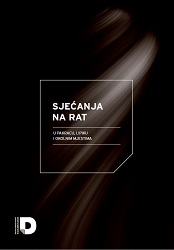
Publikacija Sjećanja na rat u Pakracu, Lipiku i okolnim mjestima nastala je kao rezultat nastojanja Documente da se zabilježe sjećanja ljudi koji su preživjeli rat na području Pakraca, Lipika i okolnih mjesta. Cilj nam je bio zabilježiti nepisane priče iz ne tako davne prošlosti koja će nas, htjeli mi to ili ne, još dugo zaokupljati. Vjerovali smo da će pokušaj rekonstrukcije ratnih zbivanja na tom području i prenošenje subjektivnog iskustva ljudi koji nisu bili nositelji političke moći, ni kreatori političke povijesti, omogućiti uvid u naizgled skrivene aspekte života na području zapadne Slavonije i produbiti spoznaju o prirodi i tijeku ratnih sukoba 90-ih.
More...